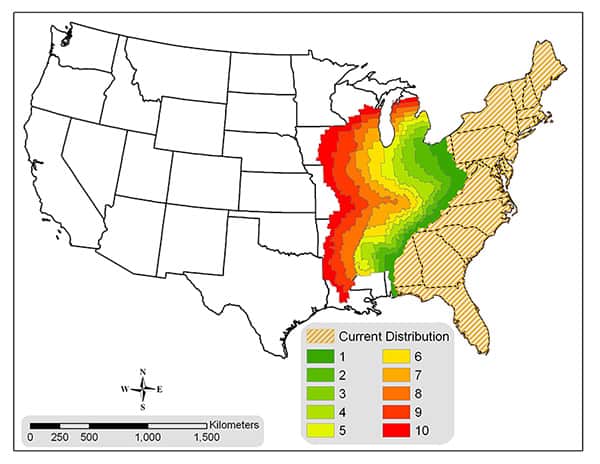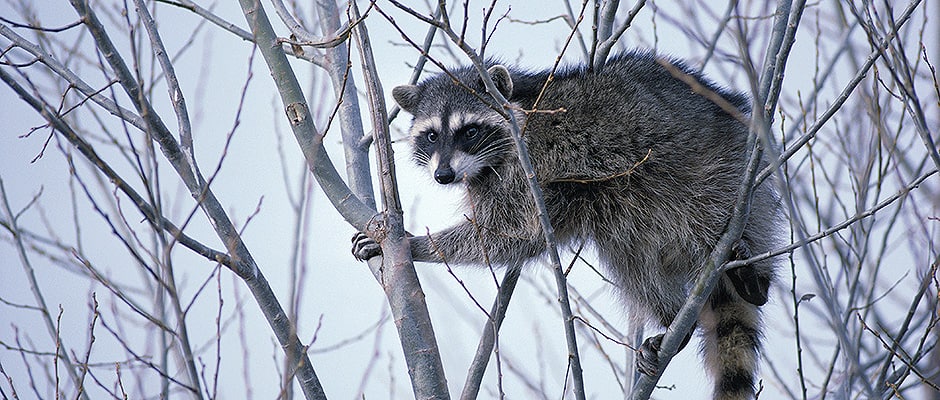Share this article
Forecasting Rabies: What if there was no ORV?
Many wildlife managers and health officials are familiar with the success of the U.S. Department of Agriculture’s (USDA) Wildlife Services National Rabies Management Program (NRMP) and understand the important role it plays in preventing the spread of rabies in North America through a wildlife oral rabies vaccination (ORV) program. But others may not be as knowledgeable or don’t believe wildlife rabies is a concern. How do we help them understand the value of such a program? One way is to show them how our lives might be different if there were no ORV efforts in the United States.
In the United States, wildlife accounts for 92 percent of all reported rabies cases. The raccoon rabies virus variant, in particular, is responsible for significant spillover infection into dogs and cats, as well as other wildlife. In an effort to reduce rabies in wildlife and prevent possible transmission to humans, domestic pets and livestock, NRMP experts and their partners annually distribute more than 6 million ORV baits in 16 states along the Appalachian Mountains and in Texas for raccoons, skunks, gray fox, and coyotes. The benefits of maintaining the ORV zone in the eastern United States are significant for several public health, agricultural, and wildlife management reasons. Specific benefits include reductions in human post-exposure prophylaxis, reductions in livestock and pet losses, and the protection of wildlife resources.
To better quantify the benefits of the NRMP, researchers at Wildlife Services’ National Wildlife Research Center (NWRC) and partners modeled the spread of raccoon rabies over 20 years in the absence of current ORV activities in the East. The forecast included 10 raccoon rabies spread-expansion regions each representing a 2-year timeframe. The combined 10 regions show the extent raccoon rabies is projected to spread after a 20-year period without ORV intervention. The forecast models incorporated three different rates of spread: low (15 km/year), medium (30 km/year), and high (60 km/year) based on historical rates of raccoon rabies spread in the eastern United States. Over the 20-year horizon, spread would extend as far west as the Texas border and western Iowa. However, over a longer time period, the spread would likely continue to the Rocky Mountains, where harsh winters and unsuitable habitat might prevent any further westward movement. Such an expansion would cause approximately $1.1 billion in additional damages due to an increased need in human post-exposure treatments, livestock and pet losses, and impacts to wildlife resources.

Map of the potential spread of raccoon rabies by 2-year increments if the ORV zone were no longer maintained.
Wildlife Services is a Strategic Partner of The Wildlife Society.
Header Image: Image Credit: Dave Menke, USFWS








